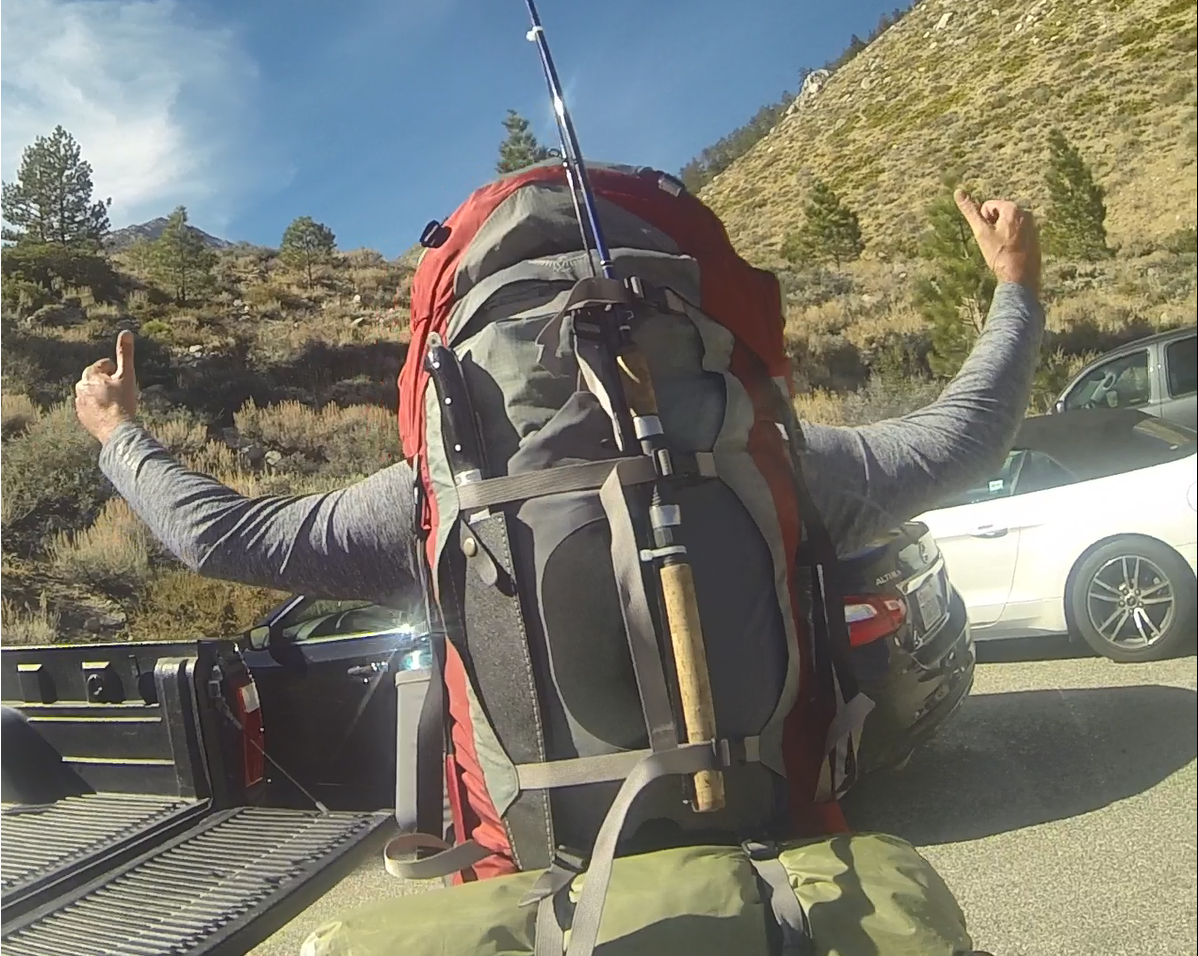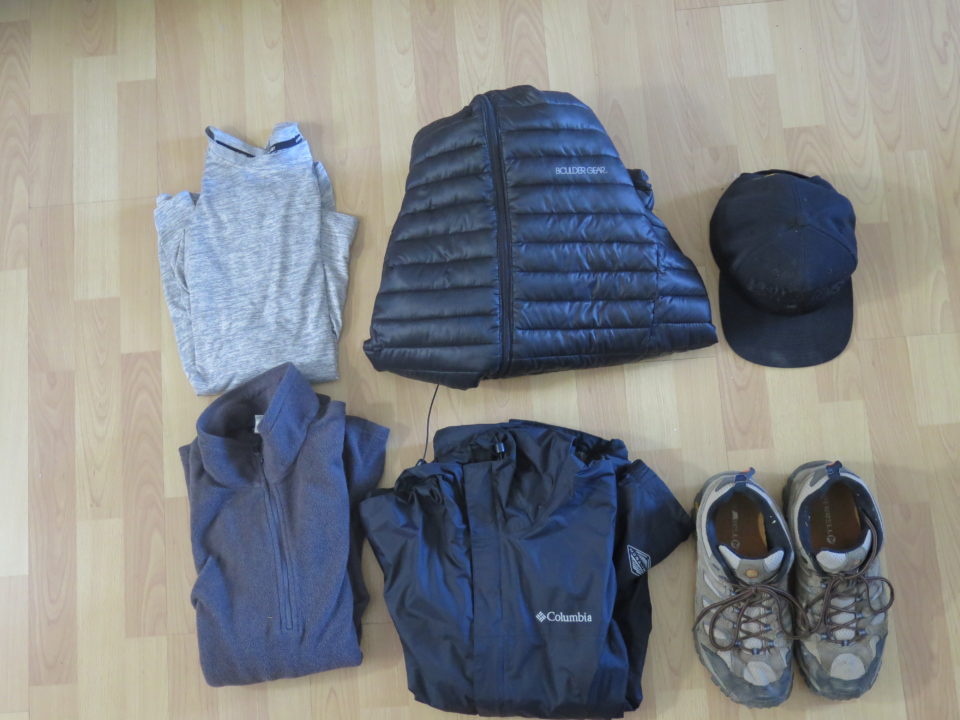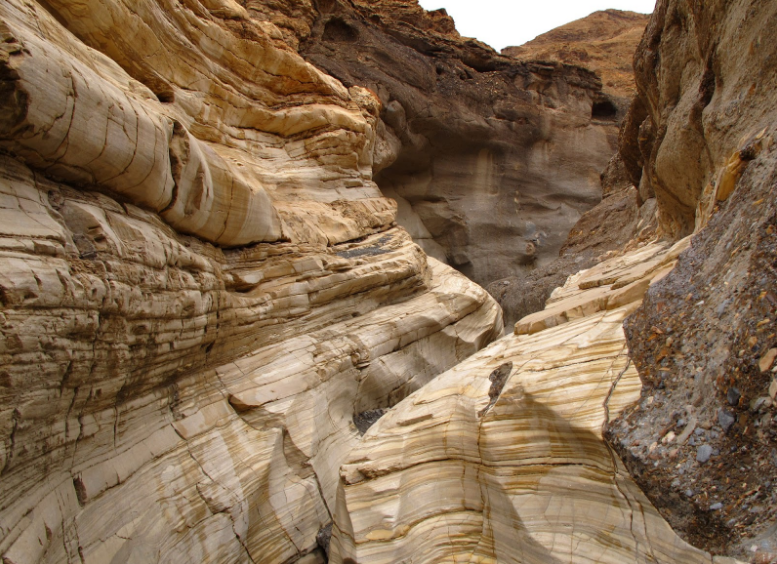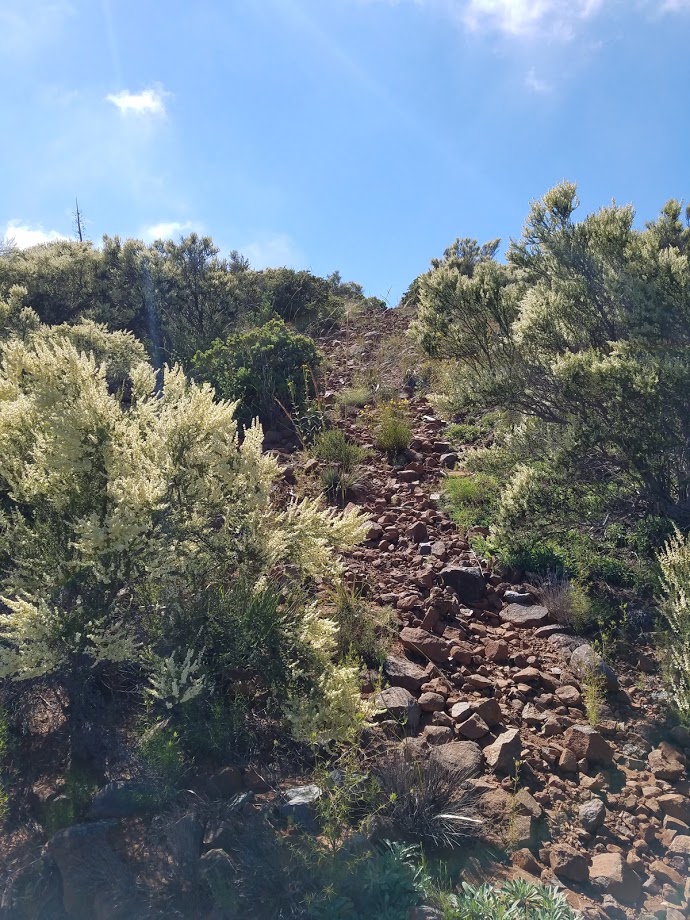5 Beginner Hiking Mistakes And How To Avoid Them
To err is human. Learning from our mistakes is what makes us better. If you are new to hiking. or even if you are experienced hikers from time to time there will always be something you’ll forget or screw up. Hiking mistakes happen. When I first started hiking and backpacking I was the poster boy for what not to do. I overpacked, under packed, forgot food, forgot clothes, wore the wrong shoes, got hurt, and was stranded overnight in a snowstorm. I have since learned from my mistakes and now my outdoor experiences are so much more enjoyable for me and the people around me.
The thing is all of the above situations were because of my own doing and that is what this post is all about. If we just take a little time before we leave on a hike to check things like the weather, terrain, distance, etc. most hiker problems can be avoided. So here is the 5 beginner hiking mistakes and how to avoid them.
Hiking Mistake #1- Overpacking
I mean you gotta take everything, right? How dare you head out to the great unknown, deep into the wilderness, froth with danger, and be unprepared. You have heard too many gruesome stories of hikers being trapped in the woods for days, forced to build fires and eat insects for survival, and no way is that going to happen to you, so you are going to pack everything. Even though you will only be two miles off the main road, next to a cell tower, on a well-marked trail you can never be too cautious and pack too much, can you? Yes, yes, you can.
On my first day hike of 3 miles, I packed for the apocalypse. I packed half a gallon of water, a water filtration system, 2 sweaters an extra pair of pants, a knife, a raincoat ( I live in Southern California), a battery charger in case my phone went dead, and 4 peanut butter sandwiches that I never ate. I didn’t know what to expect, so if I was in doubt, I packed it. Big hiking mistake. Hikers always say ” you pack your fears,” and my fears were dehydration, starvation, and hypothermia in July. I was afraid to leave anything behind, and I didn’t. Truth is you don’t need to carry much with you on most day hikes. As I mentioned above most of these hikes are close to a main road or for some of you within city limits, most trails are well marked, and you probably will have cell reception, and you will only need to pack the essentials like, water ( 2 liters per person is suitable for a 5 mile and under day hike, a light snack, and maybe a windbreaker/ raincoat/fleece sweatshirt if you feel the temperature may drop on you from inclement weather, potential storms, or changes in altitude.
Now there may be a time you will be doing a more aggressive, long day hike where you will need to pack more stuff. I came up with this handy packing format here. It talks about using the three T’s to get the right balance, Time, Temperature, and Terrain. You can read that guide here.
I know the feeling of not wanting to forget something important but in the pursuit of making sure we prepare for everything we end up taking way too much stuff that we know we will never use. Recently I invited a good friend of mine on an overnight backpacking trip. He packed enough supplies to keep us alive for 30 days. Look at the size of that pack. It weighed 47 pounds!
NEED A LITTLE HELP? READ MY “WHAT TO PACK ON A DAY HIKE GUIDE”
Hiking Mistake #2-Underestimating distance
” Hey, its only 3 miles, That’s not far at all.” I have said that so many times only to immediately regret those very words as I was gasping for air while feeling the inferno burn in my thighs. Our judgment of time and distance comes from our everyday lives in which most of us use a vehicle or public transport. So when we think of one mile, it doesn’t sound that far, but depending on the trail you will be hiking, it can feel like ten miles.
One thing, I learned quickly was to understand certain types of terrain and my physical abilities covering that terrain. For example, I live in Southern California, where we have a lot of steep rocky trails. Some trails require scrambling or bouldering which is traversing through rough, steep terrain using your hands and legs. Bouldering or scrambling exerts a tremendous amount of energy. Every one mile of scrambling can be the equivalent of three miles on a flat trail. Make sure to understand the terrain you are hiking and your physical abilities before setting out on your hike.
Let’s make a note about physical abilities. I have been guilty a time or two of hubris taking over my better sense of judgment. Sometimes we want to see how much we can push ourselves. Sometimes we want to try to keep up with another hiker who may be more physically fit than us. There are many different reasons we may experience this, but it is essential to hike your own hike and stay within your limits. I’m all for pushing yourself and testing your limits, but there is always a time and a place for that. Pushing too hard or doing too much can lead to excessive fatigue that can drastically impair your mental and physical abilities leading to injury. Hiking is supposed to fun, not torture.
Scrambling through this kind of terrain is exhausting. It won’t take long to wear yourself out traversing through this.
Hiking Mistake #3-Wearing the wrong clothing
When I first started hiking, I had a very rudimentary idea about clothing. I knew what hikers wore, but I didn’t know why. Also, I didn’t want to go out and spend money on hiking clothes if I wasn’t going to hike often. Anyway, I figured hiking is an activity, so I will wear active gear, sounds easy right? That ended up consisting of a T-shirt and a pair of workout pants. That combo was comfortable but not durable. It didn’t take long to rip the workout pants to shreds, so I ended up switching to jeans. At first, I loved the jeans. They were durable and comfortable. That is until I got them wet. The denim material absorbed my sweat and water like a Hefty paper towel, and when that happened, the jeans became heavy.
I eventually broke down and bought a real pair of hiking pants. Most hiking pants are made of a nylon, polyester, and spandex combo. These pants are durable, lightweight, stain-resistant, and fast-drying. As you sweat the material wicks away moisture keeping your body temperature in check and you more comfortable. When the pants get wet from rain or stream crossings, they will dry quickly when the rain stops, or you exit the stream. Plus they will not add excessive weight to you when they do get wet. You don’t have to break the bank on an expensive pair of hiking pants to get quality. You can find nice hiking pants at Walmart, Target or sometimes even Costco will carry Eddie Bauer hiking pants between 18 and 25 dollars. I bought a pair of the Wrangler hiking pants for 20 dollars I have hiked over 100 miles in them, and they still look new.
This goes for the shirts as well. Cotton, wool, corduroy, or flannel is not the best choice for hiking. Same as denim, these materials will absorb your sweat like a sponge, dry slowly, and increase in weight. It’s more of a hindrance with a shirt because you will sweat way more through your torso than your legs and temperature changes will be magnified through your chest as well. I use long sleeve dry fit shirts like these. They are durable, fast-drying, and lightweight. They are cool enough that you can wear them in the heat of the summer and be comfortable. You can wash them out in a creek or stream, and they will dry in minutes, and just like that, you are wearing a fresh shirt again. Or if it’s super hot outside you can dip them in a cold stream and put the shirt on cooling down your temperature. They work great as a base layer in colder temperatures.
They also make excellent traveling gear because they pack down small and can be washed out in a sink.
I will take a quick second to talk about shoes. I find that hiking boots are not necessary, and of course, this is just my opinion. Unless you are going on an expedition for 20 days off-grid with a 50 plus pound backpack you do not need hiking boots. Most hiking boots are bulky and heavy, that is unless you spend the big bucks for a lightweight pair. Not only are hiking boots bulky and heavy but they can take multiple hikes to break in leaving you with nasty foot blisters. Also, waterproof shoes and boots are not necessary either. This is because if you cross a stream, all the waterproofing in the world won’t help you. Plus, when a waterproof shoe or boot gets wet on the inside, it traps all that nasty, moldy foot stench inside of the shoe because it will not dry properly.
A good set of running shoes or tennis shoes will do fine for most hikers. If you are in search of something more durable and more supportive, pick up a pair of these lightweight Merril Moab shoes. I currently wear these shoes. I like them because I have extra wide feet and tend to bust out the sides of running shoes and cross-trainers. These shoes have taken a beating and are still going.
Avoid hiking mistake 3 by wearing lightweight, moisture-wicking clothing.
Hiking Mistake #4- Getting lost
If you are like me who gets lost driving to the grocery store, then it’s more than possible to get lost on a hiking trail, even a popular one. If you are on a well maintained, high trafficked trail, chances are you will not get lost, but it’s still possible. Many trails have side trails to them that other hikers have created, sometimes they appear to lead in the same direction as the main trail but do not. You can easily find yourself walking down the wrong trail, and after spending several minutes or hours looking at the same scenery, it all starts to blend in. This can cause you to lose a general sense of direction. Remember the Blair Witch Project where they walked in the woods all day and ended up back at the same place? Same thing here you can quickly lose track of your geography.
If you are doing more isolated hikes, this can be a bigger problem. Living out in the Southwest, I do a lot of desert hiking and its hard to maintain a well-groomed visual path in the sand and wind. After hiking all day in the desert, the landscape starts to look the same after a while. It’s so easy to make a big hiking mistake and get lost. Also, don’t always rely on your GPS from your phone. In some areas of bad reception, the maps can be inaccurate or not work at all. Make sure to pay attention to your surroundings. If I am hiking somewhere for the first time, I like to look for unique landmarks to track my time and location. So for example, maybe one mile on the trail I will notice a funky shaped rock or tree. I will make a mental note of that. This way, when I’m backtracking, I have some type of geographical reference point to track my location. I also use this as time and distance marker. I can use this geographic marker to let me know what mile I am on and how far away I am from the trailhead etc. The only downside is sometimes I stumble on my geographic marker and say, ” Dang I still have two more miles to go. Crap! I’m beat. ” Everything has a disadvantage to it, I guess.
You can easily get lost hiking through desert slot canyons like this photo here. This goes for extremely wooded areas and forests.
Hiking Mistake #5- Injury
Obviously the most dreaded hiking mistake is an injury. When I am talking about an injury, I am not talking about severe injuries like broken bones, snake bites, deep wounds, or concussions. Yes, those do happen on occasion, but that is not common to most hikers. What is common, and can be more dangerous than anticipated, is the common itself. For example, a sprained ankle. I think we all have tweaked our ankle a time or two and in everyday life, it’s not that big of a deal. Yes, it hurts, but it’s more of an inconvenience to us, it’s not life-threatening. However, something as small as a sprained ankle can be a big problem on a trail. Imagine having to walk several miles over rough, steep terrain, carrying a backpack, at dusk on a weak, limping leg. That could turn into a problem.
Think of the other common injuries you can get while hiking like sprained or twisted knees, a tweaked back, sprained or separated shoulder, bruised hips, stubbed toes, sprained ligaments, deep tissue injuries, can have the same impact on your safety. As mentioned above, these injuries are not life-threatening, but they can lead to a very uncomfortable situation and possibly lead to a mistake that may result in a more severe injury. When I am hiking, I usually slow my walking pace down anyway just to be sure. If I am ascending up a steep face, or descending down rough terrain, I will be extra cautious about my footing. I like to make sure my leed foot is firmly planted before lifting up my back foot.
Hiking trails are usually made up of uneven ground and sharp objects like rocks, tree stumps, cacti, and logs. Your footing and balance are already compromised on this type of terrain, making it far easier to fall down. If you do encounter a fall on rugged terrain, these objects may cut and bruise you up increasing the likelihood of a painful day. Most hiking trails are very safe but its always a best practice to slow down over challenging terrain and take an extra second or two to make sure you have your balance and footing
A steep rocky surface like this on Gutay mountain in San Diego is uneven and slippery. If you take a tumble on those rocks they will probably remove a couple of layers of skin.
Hiking is a relatively safe and enjoyable activity. You will make some hiking mistakes along the way but that’s ok, that’s how we learn. The most important this is to enjoy yourself. Hiking is not a competition its a way to connect with nature and lower your stress levels, its a way to share quality time with friends and loved ones. So get out there and take advantage of all these great trails.
Did I leave anything out? Have a suggestion? Feel free to leave it in the comments below.
ELIMINATE HIKING MISTAKES WITH MY FREE GUIDE ” WHAT TO PACK ON YOUR DAY HIKE “
MAKE SURE TO CHECK TRAIL MAPS, WEATHER, AND ESTIMATED HIKING TIMES WITH ALLTRAILS.
Hiking mistakes, hiking mistakes, hiking mistakes, hiking mistakes. Say no to hiking mistakes!





